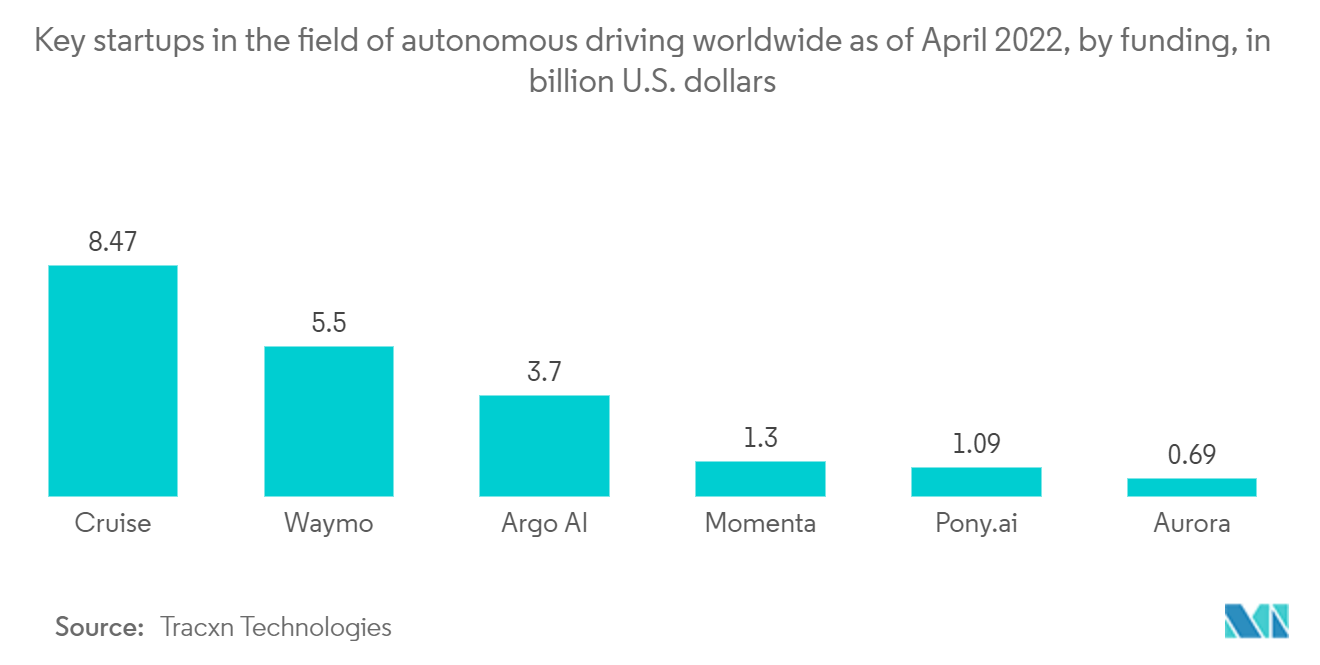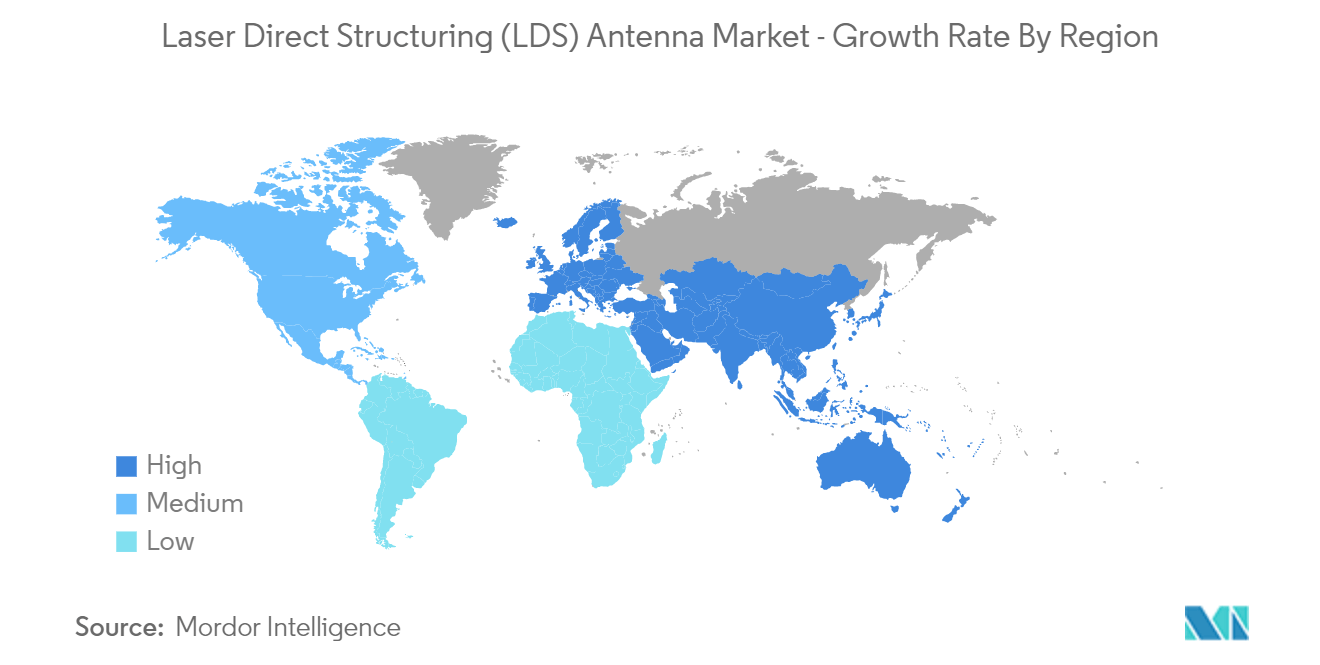Market Trends of Laser Direct Structuring (LDS) Antenna Industry
Automotive is expected to register a Significant Growth
- Laser direct structuring of 3D molded connecting devices (3D MIDs) is widely used in automotive applications to reduce weight and boost reliability. The production of next-generation (future) vehicles depends mostly on enhancing vehicles' abilities to connect wirelessly to a wide variety of services. The vision for connected vehicles aims to effectively use wireless communication resources to deliver advanced functionalities for effective traffic management, infotainment, and ensuring the driver's safety.
- To fulfill the requirements for a wide variety of applications in broadcasting and telematics, onboard automobile equipment is integrated into an increasing number of wireless services. Typically, automotive onboard antennas, like integrated rooftop antennas, on-glass antennas, and rod antennas, are mostly used to cover all wireless communication standards.
- LDS is majorly used in steering wheel hubs, as most automobiles generally come equipped with steering-mounted controls. In addition, LDS is widely used in forwarding control switches, positioning sensors, and brake sensors. LDS finds its applications vastly in advanced driver-assistance systems (ADAS) for self-driving cars. Moreover, self-driving cars are anticipated to see rapid adoption in the transportation sector. The European Transport Safety Council (ETSC), a not-for-profit advocacy group in Brussels, projected that automatic braking could minimize traffic death rates by as much as 20%.
- For example, in June 2022, Tesla built its Enhanced Autopilot in China and the United States. In the United States, Enhanced Autopilot costs USD 6,000. Meanwhile, in China, it costs USD 4,779. The features included in Enhanced Autopilot are navigate on autopilot, auto lane change, autopark, summon, and smart summon. Tesla also released Enhanced Autopilot in New Zealand and Australia. In New Zealand, Enhanced Autopilot costs USD 3,615, and in Australia, it costs USD 3,579. Enhanced Autopilot offers the same features in all four countries.
- By 2030, autonomous automobiles will probably rule the market, as per NASDAQ. In addition, several governments worldwide are promoting the use of ADAS features. For instance, the National Highway Traffic Safety Administration (NHTSA) of the United States Department of Transportation (USDT) established the Federal Automated Vehicles Policy (FAVP) in relation to highly automated vehicles (HAVs), which can range from cars with advanced driver-assistance features to autonomous vehicles.

North America is Expected to Hold Major Share
- Nearly all the end-user sectors in the North American region greatly demand LDS Antenna solutions. However, the region's main source of demand for LDS antennas is likely to come from the consumer electronics, networking, and automotive industries.
- The region's strong automobile industry growth helps the market grow and expand. For the enhancement of the comfort and safety of passengers, modern automobiles need to combine a variety of sensors and electronic assistants. However, the requirement to reduce the number of components is growing along with deploying these sensors and components.
- Incorporating LDS technology is anticipated to promote miniaturization and lower the number of components when used with appropriate connection and assembly technology. LDS technology also assists in terms of cost-effectiveness in the manufacturing process and aids in the extension of design alternatives.
- The United States has a significant share of the major consumer electronics markets. According to the Consumer Technology Association (CTA), smartphones generated the most revenue in consumer electronics/technology sales in the United States during the previous five years. The sales value of smartphones sold in the United States increased by 1.7 billion USD in 2022 to USD 75.4 billion compared to USD 74.7 billion in the previous year.


